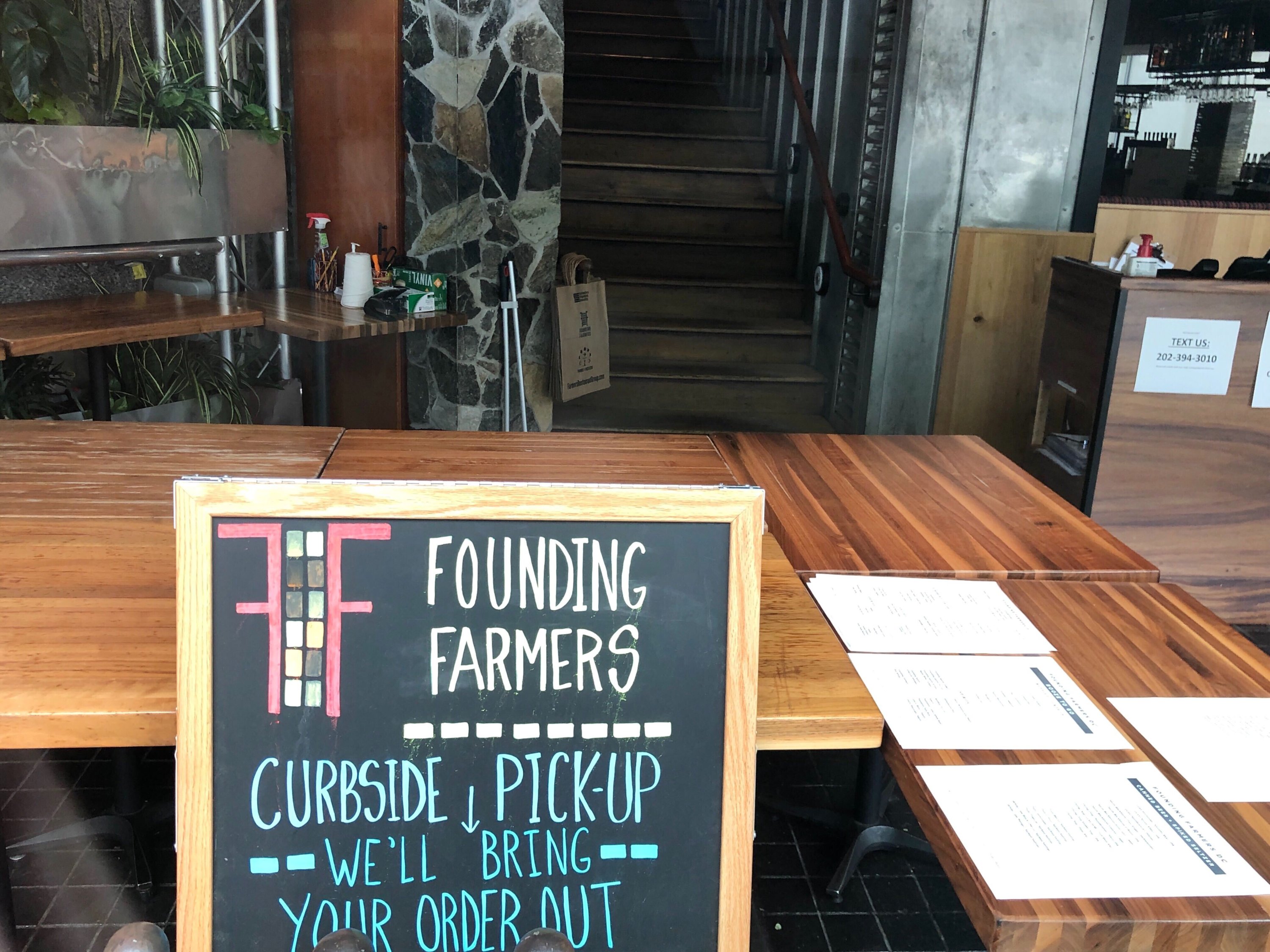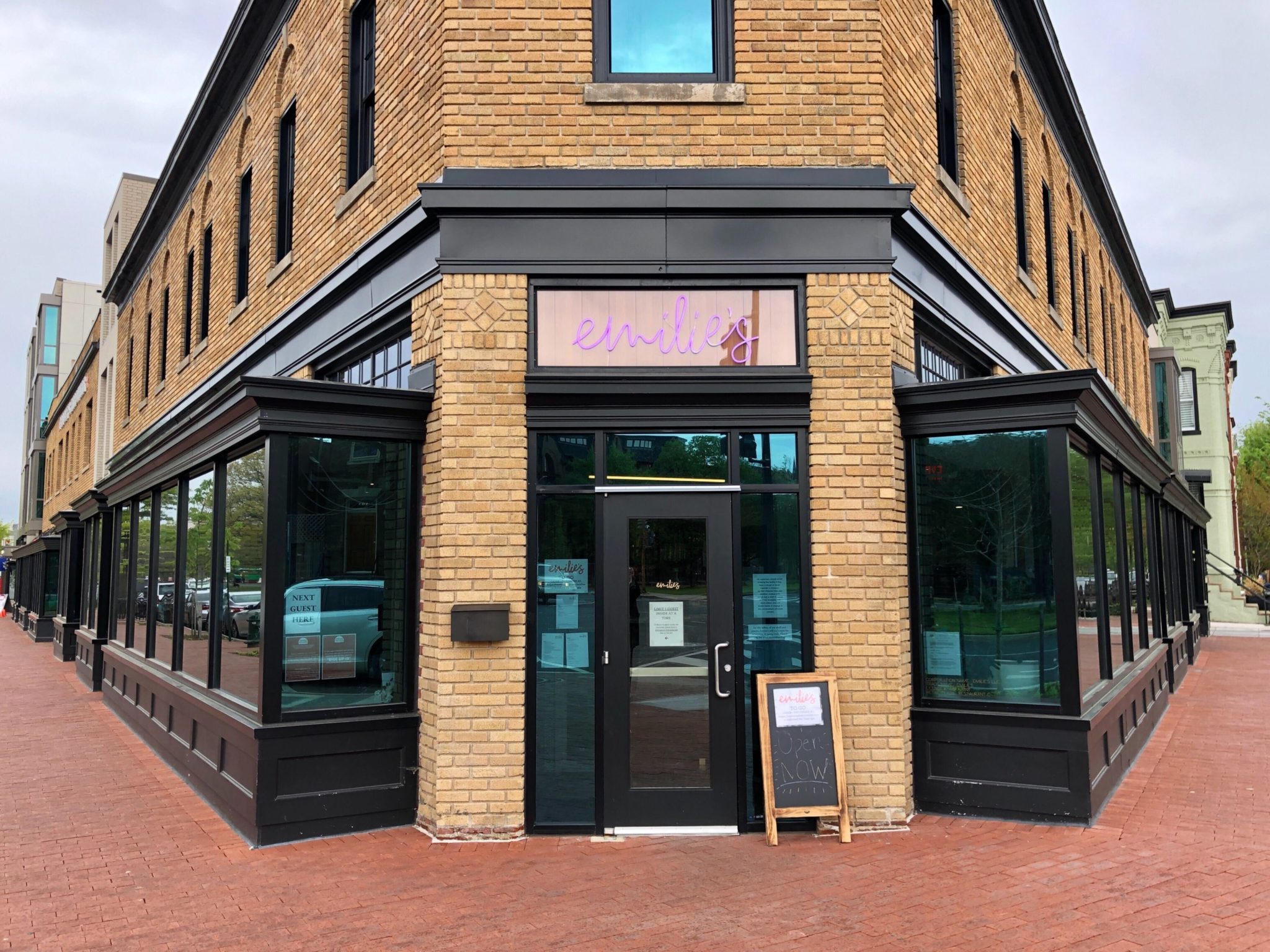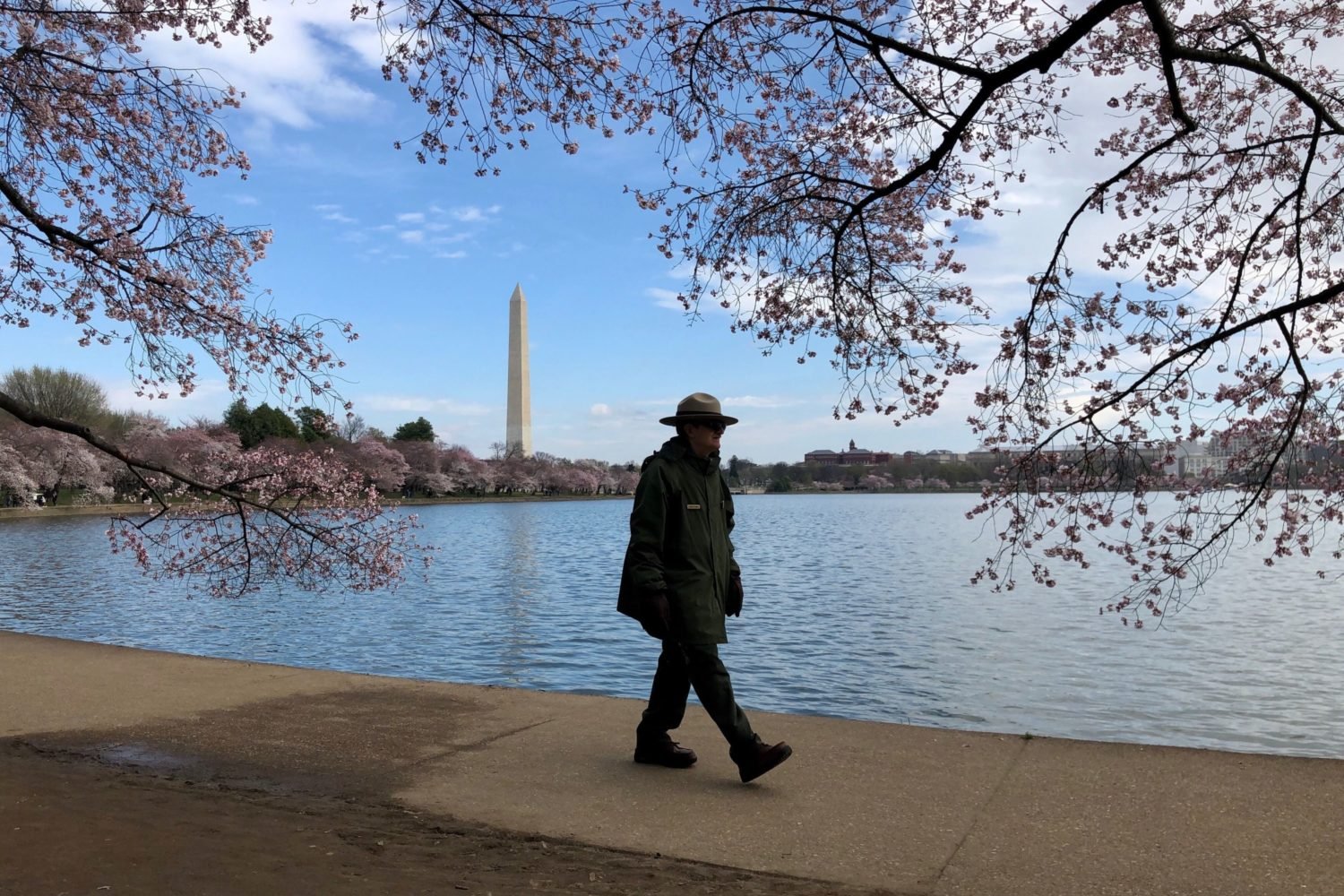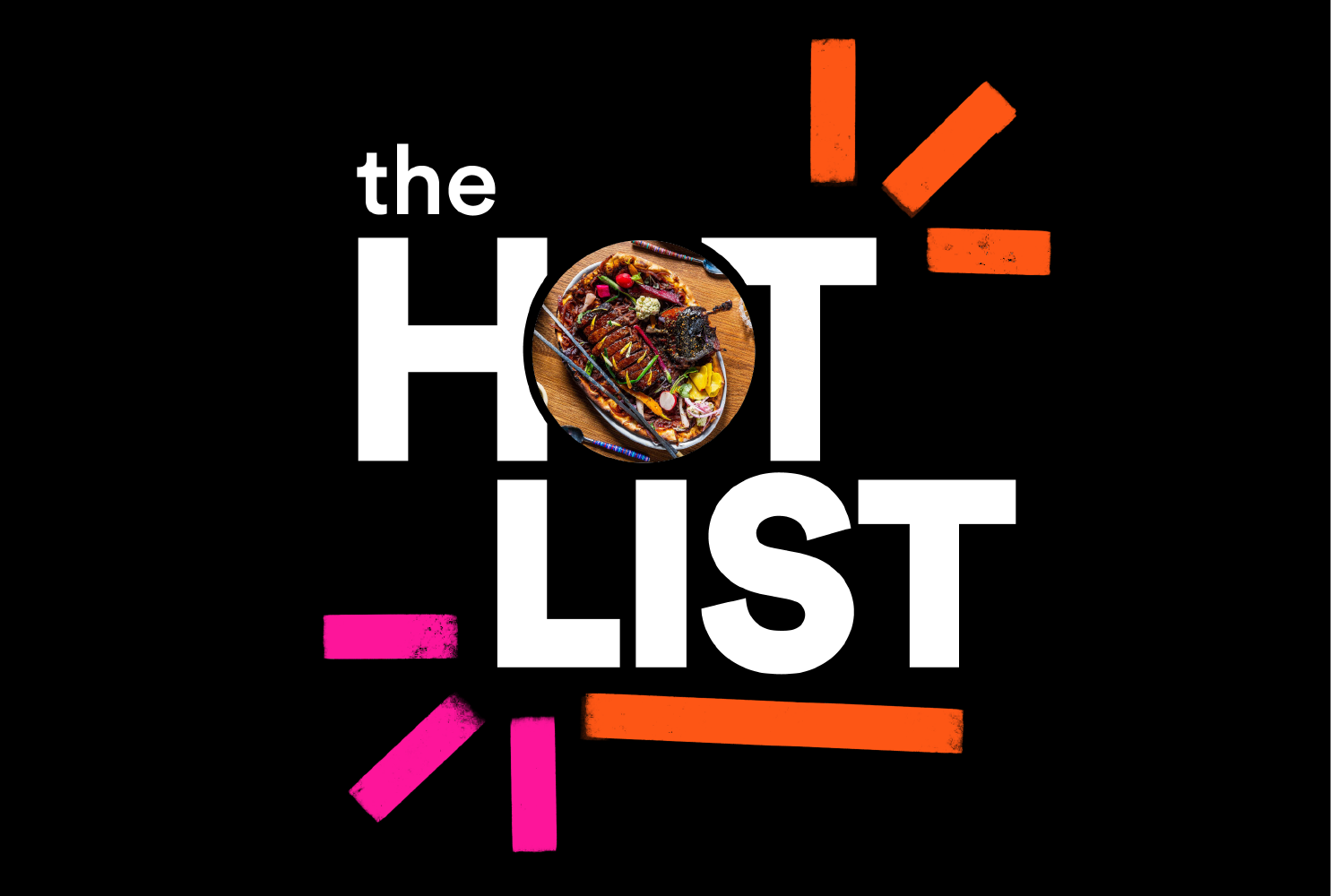About Coronavirus 2020
Washingtonian is keeping you up to date on the coronavirus around DC.
Chef Michelle Poteaux started the year off strong at Bastille Brasserie & Bar in Alexandria. She and her partner/husband Christophe had just remodeled their French dining room and were seeing some of their best business in a long time. That’s all come crashing down as the coronavirus-curbing restrictions halted dine-in service. Poteaux’s 29-person staff is down to just nine or ten people. Revenue has dropped 75-percent. The restaurant’s landlord isn’t offering any breaks.
“I find it really hard to balance the stress between what my kids need, what the restaurant needs,” Poteaux says. “I’m good for about two days and then I find I have a meltdown. I’m angry, I cry. I want to give up, it’s just not who I am.”
Among the potential lifelines that Poteaux had been counting on was the new Paycheck Protection Program (PPP), which provides small businesses with loans to maintain their payroll. The loan can be forgiven—basically becoming a free grant—if 75-percent of the money goes toward employees for at least eight weeks. (The rest can be used for expenses such rent and utilities.) Otherwise, there’s a one-percent interest rate. Congress created the program as part of the $2 trillion economic rescue bill to help prevent layoffs.
But after a rocky rollout, the program’s $349 billion ran dry in less than two weeks. While the massive chains behind Ruth’s Chris Steak House and Potbelly received tens of millions of dollars, a lot of smaller independent DC-area restaurants like Bastille were left hanging dry. Congress is expected to approve additional bailout funds shortly, but Republicans and Democrats have been butting heads over the specifics. Even when the money is available, banks anticipate it could be exhausted again in as little as 48 hours. It may also be too little too late for businesses that are hanging on by the day.
Poteaux says she hasn’t heard a word from United Bank since she submitted her loan application, despite frequent follow-ups.
“Nothing, nothing, nothing, and then of course it’s out of money. I don’t even know if our packet even ever got submitted,” she says. “I know one person who did get it. None of my industry friends. This person happened to be my father who is an auto mechanic in Missouri.”
DC, Maryland, and Virginia businesses together received about $16.5 billion, or 5-percent, of the total loan dollars approved by the Small Business Administration. In DC, only 3,253 loans totaling $1.25 billion were given out.
Who got the money and who didn’t had a lot to do with bank relationships and “a little bit of luck,” says restaurant accountant Matt Hetrick, whose firm CPA Eats helped with nearly 80 PPP applications.
“Ninety-five percent of banks were garbage. It’s been a very, very frustrating couple weeks,” Hetrick says. “All the big banks did nothing to help any of their clients.”
It wasn’t just big banks though. In particular, Hetrick—along with several operators Washingtonian spoke to—have been frustrated by the go-to lender for restaurants in DC: EagleBank.
“They had a huge swath of the restaurant community at their bank, but in terms of getting these loans and helping people through them, it didn’t happen,” Hetrick says. He’s only aware of “maybe one or two” PPP loans approved by EagleBank. In many cases, he says, the bankers simply ghosted.
“Shit the bed would be a polite way to put it,” Hetrick says. “I personally really like some of the people there that we work with at the senior level, but they did a pretty bad job of helping anybody and didn’t communicate at all.”
EagleBank declined to say exactly how many applications it received, how many loans it approved, or how much money it dispersed.
“Since the application process was opened, thousands of customers responded with requests. Due to the enormous interest and the extraordinarily high volume of applications the Bank received, not all applications were processed in sufficient time to qualify for the first round of PPP funding,” the bank said in an emailed statement. “Eagle’s teams have been working around the clock to advance applications and are continuing to do so in preparation for a new round of funding.”
An email obtained by Washingtonian from one of EagleBank’s senior VPs to clients offers a more candid perspective. “These have been the toughest days of my career and we did not have anywhere near the number of success stories that we would have liked,” the message reads. It later continues: “At this point, I’m sure most of the confidence you had in EagleBank has taken a serious hit and I don’t blame anyone for those feelings.”
While the banker says they’re working “day and night” to rectify the situation, he adds that he can’t guarantee funding the next go-around and recommends that “everyone reach out to another Financial Institution as a back-up plan.”
Founding Farmers restaurant group was among those who submitted an application through EagleBank and did not receive a loan. Owner Dan Simons says he’s “confused and disappointed” by the lack of communication and the outcome.
“I had definitely let myself emotionally believe that we were getting it,” Simons says. “It just seemed so reasonable, and because we are rehiring people and creating jobs. We’re in the fight, and so that’s supposed to be exactly what the money is for.”

Simons is converting his restaurants into online grocery stores in addition to offering meals for takeout and delivery. The company initially laid off 1,100 people, but has brought back 200 so far. With a PPP loan, Simons says he could double or more his rate of rehire. “The flexibility that a PPP loan gives you is you don’t have to panic,” he says.
As is, Simons says the stores have a shot of being at “60-percent or 80-percent or more of their prior sales volume.” But he’s hesitant to make it sound like that’s good, especially given that a hard-to-utilize location like National Harbor is down 97-percent. Meanwhile, Simons has been juggling cash to figure it all out. Last week, he put $50,000 on his personal credit card for a “tanker load” worth of hand sanitizer ingredients, so he can sell the product to DC government for frontline workers.
“I’m trying to not scare my kids, but at the same time, my kids need to understand mom and dad aren’t making any money. We haven’t made any money since February,” Simons says. “I don’t know exactly when we’ll get paid again.”
Chef Kevin Tien had been expecting for the worst from PPP, and so for him, the government and banks did not disappoint. He applied for loans for his popular Capitol Hill restaurant Emilie’s (through EagleBank) and his Arlington fried chicken sandwich spot Hot Lola’s (through Chase). Neither received funds.
“I don’t know anybody that got it,” he says. “I have friends all over the country that have their own businesses that are just like our restaurants—small, indie—and I haven’t heard of anybody getting it.”
Tien considers himself lucky that both restaurants are breaking even with takeout business. At Emilie’s, he’s kept 24 of his 67 employees on payroll, and everyone is still receiving health benefits. But even if he had gotten the PPP loan, Tien says it doesn’t do much for restaurants now.
“It’s like the Titanic hit the iceberg, but you’re just trying to fix it with a small band-aid,” he says. “It’s not going to fix the ship. We need something that’s going to be real and longterm to help us.”
For starters, the money must be used within eight weeks of receipt. “This whole situation is not going to end in eight to 10 weeks,” he says.
Though the program ensures workers get paid now, Tien and other restaurateurs find it problematic because it requires them to keep people employed when they’re not even allowed to fully open. Many fear they’ll just have to layoff staff again at the end of the eight weeks and won’t have the resources when it’s time to reopen to stay open.
The Independent Restaurant Coalition, a group lobbying Congress to save restaurants, is pushing to start the clock on using the funds when restaurants are allowed to be fully operational. They also want to extend the maximum loan amount to three months after restaurants can legally reopen to full capacity.
For now though, it’s providing restaurateurs like Chef Geoff’s Geoff Tracy with some much-needed breathing room to figure out next steps. Tracy wasn’t even notified about his PPP loan being approved through United Bank. The money just suddenly showed up in the company’s account. When his brother and business partner Chris Tracy called to tell him the news, he thought it was to say they’d run out of cash. “I was like, ‘Holy crap, that’s incredible.'”
Tracy currently has 50 people on his payroll at Chef Geoff’s and Lia’s. Thanks to PPP, he’s hiring 150 to 180 more this week. Tracy knows he’ll be paying some people to stay at home, especially given that the restaurants aren’t operating at full capacity. For social distancing purposes, he wouldn’t want everyone in the restaurants anyway. But a lot of people want to work, so he’s creating all kinds of new positions to capitalize on the funds.
For starters, Tracy will open up Chef Geoff’s pop-up kitchens at two other restaurants he owns, Cafe Deluxe in the West End and Tortilla Coast in Capitol Hill. He’s hired a former general manager as director of safety and sanitation. He’s hiring people for delivery, IT, pantry sales, donations catering, purchasing, pasta-making, and handy work. He’s hiring “guest services” workers to run free errands or pick up pharmacy prescriptions for some of the restaurants’ older regulars. He’s even hiring people to help with the hiring.
“Even if the restaurant doesn’t do a lot in sales, at least I’m giving people a paycheck,” Tracy says.
Still, Tracy is well aware that this is a temporary reprieve. Even when his restaurants can fully reopen, he says there’s no way that 200 people are going to suddenly roll in on a Friday night.
“It’s scary to think about six months. It’s scary to think about 12 months. And it’s scary to think about two years from now,” Tracy says. “The restaurant apocalypse has hit.”
















